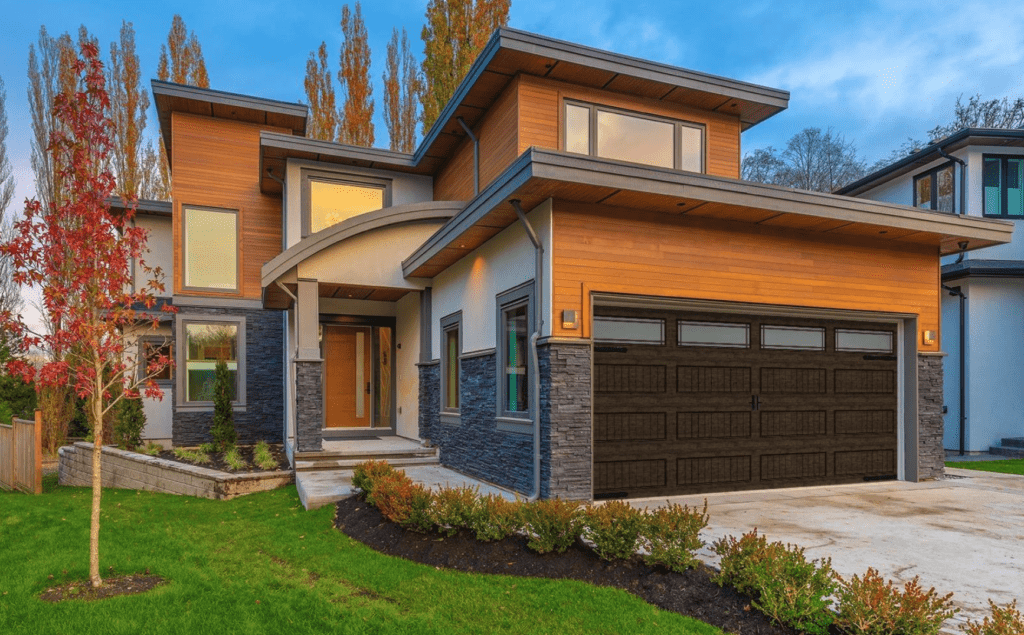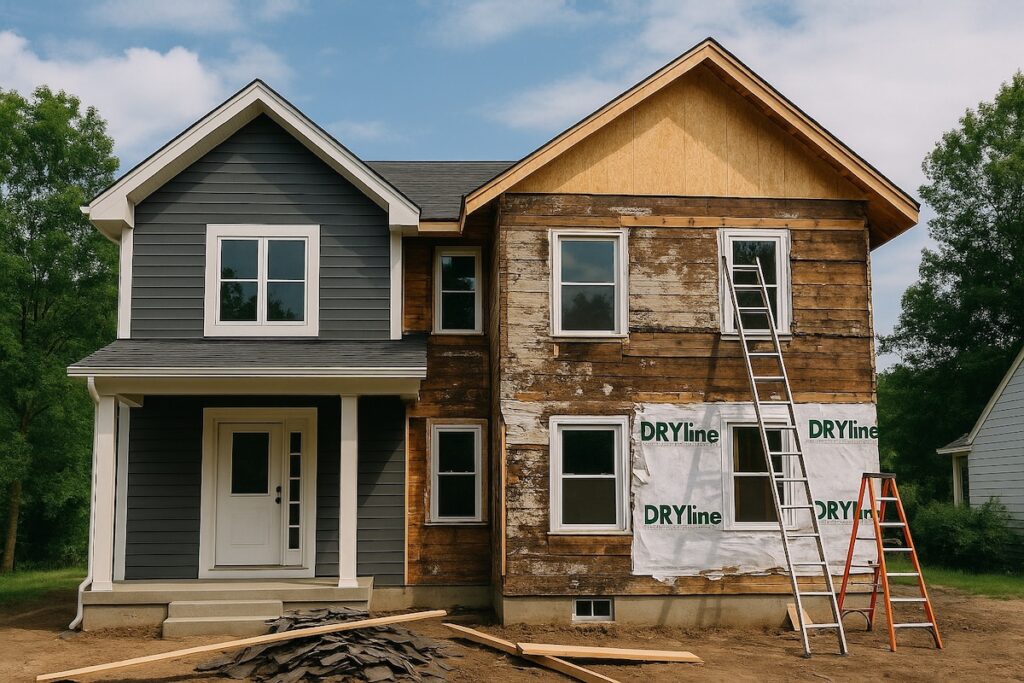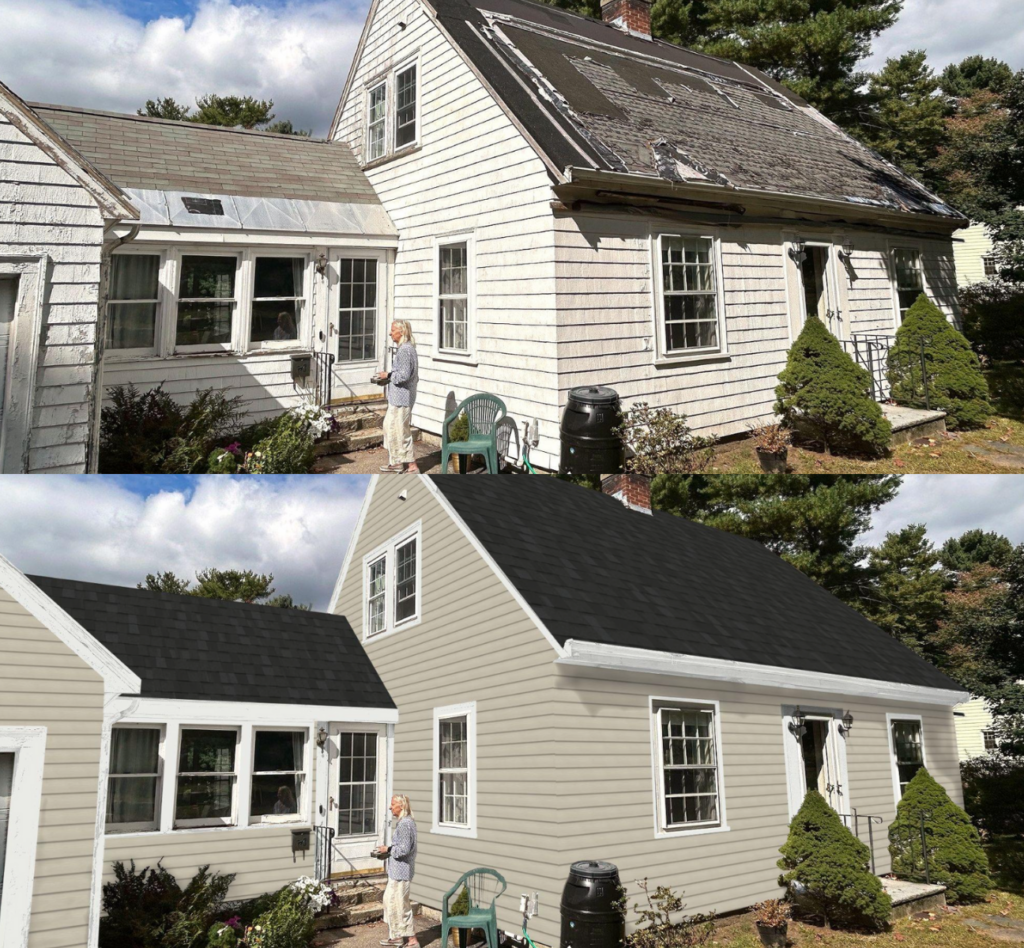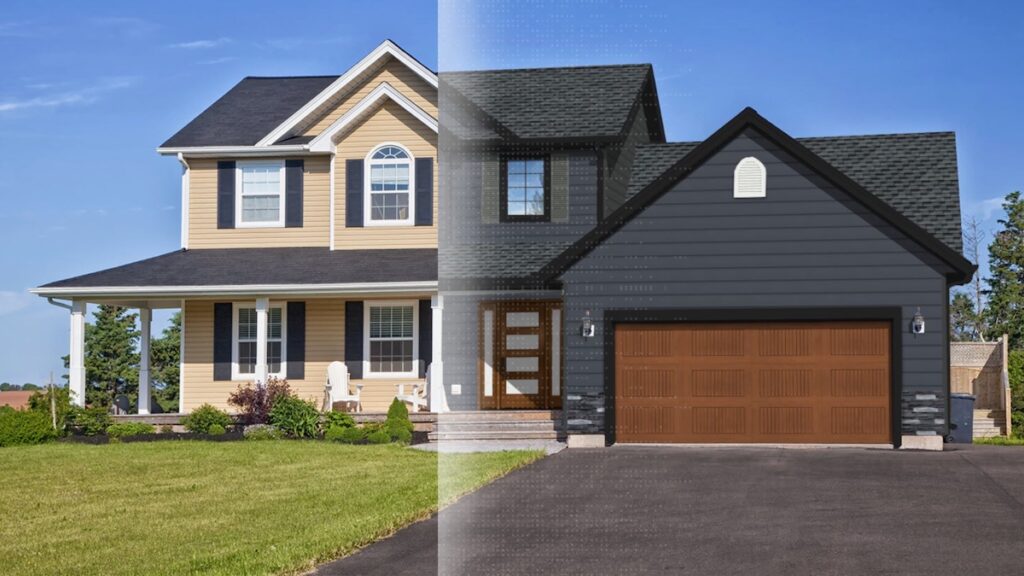TLDR
If you’re short on time but want a quick breakdown of what vinyl siding offers in 2025, here’s everything you need to know at a glance.
Average cost per sq ft: $2–$7 (standard) / $5–$10 (insulated)
Total cost for 2,000 sq ft home: $6,000–$14,000
Popular styles: Clapboard, Dutch lap, board and batten, vinyl shake, brick-look
Cheapest siding alternative: Standard horizontal vinyl siding
Top competitors: Fiber cement, wood, brick
Want to see how these styles and materials would look on your home? Try our free siding visualizer to explore your options in real time.
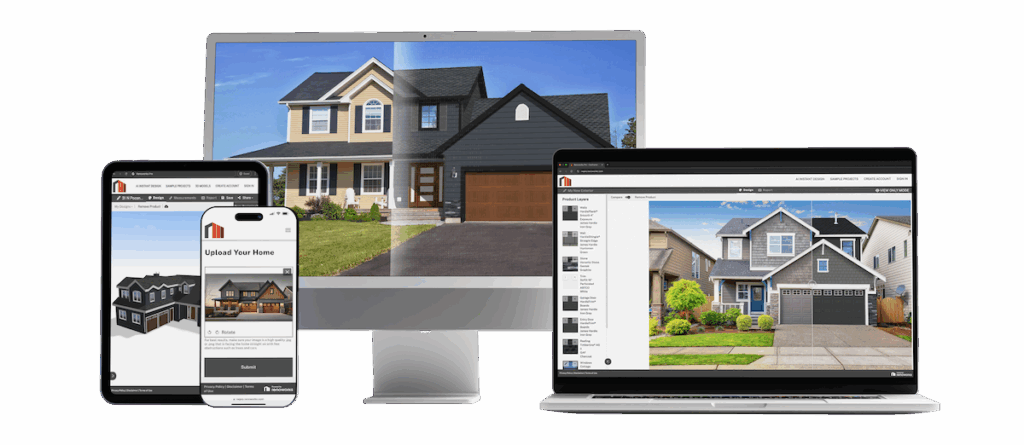
Introduction
Looking to give your home exterior a classic, timeless appeal—without the high cost or upkeep of real wood? Vinyl shake siding might be your answer. Designed to mimic the rich texture of natural cedar shakes, vinyl shake siding delivers on both aesthetics and performance while keeping your renovation budget in check.
Let’s explore the best vinyl shake siding ideas, how it compares to cedar and other materials, pricing details, and how you can see it on your home before committing.
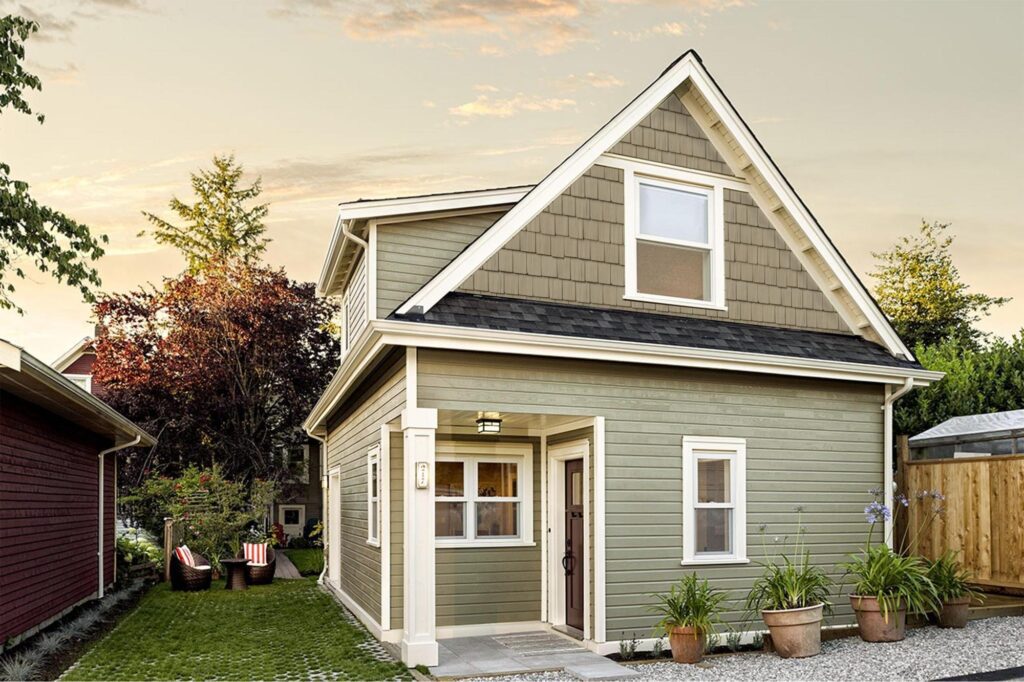
What Is Vinyl Shake Siding?
Vinyl shake siding replicates the rough-hewn look of cedar shake shingles but is made from durable PVC-based materials. It’s a popular choice for homeowners who want a rustic, textured appearance without the high maintenance that comes with real wood.
How It’s Made
Vinyl shakes are manufactured using molds of real cedar shingles to replicate authentic grain patterns. They’re formed from high-grade polyvinyl chloride (PVC), sometimes with UV-resistant coatings that prevent fading and chalking. Trim pieces are color-matched and used to create clean transitions at corners, edges, and soffits.
Sustainability and Durability
Unlike wood, vinyl doesn’t require harvesting of natural resources and can be partially recycled. Many premium brands offer fade-resistant technology, impact resistance, and fire ratings that make them ideal for a wide range of climates.
Types of Vinyl Shake Siding
-
Straight edge shakes – Clean lines, often used for modern or Cape Cod-style homes.
-
Staggered edge shakes – Irregular pattern mimics hand-cut wood, adding rustic charm.
-
Hand-split or rough-sawn textures – Create depth and shadow variation for more dimension.
Vinyl Shake Siding vs Other Siding Materials
| Feature | Vinyl Shake | Natural Cedar | Fiber Cement | Engineered Wood | Composite Shake |
|---|---|---|---|---|---|
| Cost per sq. ft. | $4–$9 | $6–$12 | $5–$10 | $5–$11 | $6–$13 |
| Maintenance | Very low | High | Moderate | Moderate | Low |
| Durability | 20–40 years | 20–30 years | 30–50 years | 20–30 years | 30–50 years |
| Aesthetic | Textured, wood-look | Natural grain | Painted, rigid | Wood grain mimic | High-end faux wood |
| Moisture Resistance | Excellent | Moderate | Excellent | Good | Excellent |
| Pest Resistance | High | Low | High | Medium | High |
Vinyl shake stands out for its combination of affordability, visual appeal, and zero-maintenance advantage—making it one of the top cedar shake alternatives.
How Much Does Vinyl Shake Siding Cost?
The installed cost of vinyl shake siding ranges from $4 to $9 per square foot, depending on the style, brand, and region. Here’s a pricing breakdown:
-
Material only: $2.50–$5.00/sq. ft.
-
Installed cost: $4.00–$9.00/sq. ft.
-
For a 1,500 sq. ft. home: ~$6,000–$13,500 installed
Long-Term ROI
-
No repainting every 5 years (saves ~$4,000 over 20 years)
-
Better insulation can lower energy bills
-
Increases curb appeal and resale value
-
Durable siding materials like vinyl trim, soffits, and fascia help prolong the entire exterior lifespan
HOME VISUALIZER TOOL
Still Imagining? Start Designing.
Visualize your home — for free. Instantly explore siding styles, colors, and renovations with just one photo. No forms. No pressure. Just results.

Top Vinyl Shake Siding Design Ideas
1. Gable Accents
One of the most popular applications is using vinyl cedar shakes on gables. Pair them with horizontal lap siding below for visual contrast.
2. Mixed Materials
Combine staggered edge shake shingles with board-and-batten or clapboard siding for a dimensional, modern farmhouse look.
3. Bold Color Palettes
Vinyl shake is available in a wide range of siding colors—from traditional browns to cool grays and even coastal blues. Try dark gray shake accents against a white base for high-end contrast.
4. Full Facade Coverage
For a truly rustic or cottage feel, consider using shake siding across the entire home exterior.
5. Entryway Features
Use hand-split cedar shake-look panels to define your front porch, dormers, or entryway.
6. Coastal Styles
Use driftwood-toned shakes in staggered patterns for Cape Cod or beachy homes.
7. Contrast With Trim
Pair bold shakes with clean white trim around windows and doors to give your home exterior balance and polish.
Why Homeowners Choose Vinyl Shake Over Wood
-
No rot or insect damage
-
No need to paint or stain
-
Fade-resistant siding colors baked in
-
Ideal for coastal or damp climates
-
Lower insurance premiums in fire-prone areas
-
Can complement wood siding or replace it altogether
Homeowners love the timeless shake look but hate the upkeep. Vinyl solves that.
Installing Vinyl Shake: DIY vs Contractor
DIY Considerations
-
Can be installed by experienced DIYers
-
Requires proper starter strips, flashing, corner posts, and trim
-
YouTube tutorials can help, but mistakes can be costly
Why Hire a Pro
-
Better water sealing around windows and trim
-
Clean edges and professional cuts
-
Access to wholesale pricing on materials
-
Properly installed soffits and vents improve attic airflow
What to Ask a Contractor
-
Are you certified to install vinyl siding systems?
-
Can you provide past cedar shake siding installs?
-
Do you include trim, soffits, and warranty labor?
Pro Tips for a Long-Lasting Install
-
Use breathable house wrap to avoid trapped moisture
-
Match shake tone with roofing, fascia, or vinyl trim
-
Install snow guards in colder regions to prevent buildup
-
Use foam-backed options for added insulation and rigidity
-
Choose siding materials with color-through technology
-
Try before you buy with digital visualizer tools
Visualize Before You Buy
Want to see how vinyl shake siding will look on your home? Use the Renoworks Visualizer Tool to upload a photo of your exterior and try out different shake styles, colors, and combinations—before lifting a hammer.
✅ Try the Renoworks Visualizer Tool: Choose your style. Test your colors. Share your design with a contractor.
Final Thoughts
Vinyl shake siding delivers the warm, classic look of cedar shake without the drawbacks of natural wood. It’s cost-effective, maintenance-friendly, and visually impactful—especially when used as an accent.
By combining shake shingles, clean trim lines, and energy-efficient siding materials, you can create a durable exterior that boosts curb appeal for decades.
Before you decide, make the smart move: see it on your home first with the Renoworks Visualizer. It could save you time, money, and regrets down the road.
Meta Description: Discover the best vinyl shake siding ideas for your home. Compare prices, see cedar shake alternatives, and visualize your renovation with Renoworks.
SEO Title: Vinyl Shake Siding Ideas: Cost, Cedar Alternatives & Visualizer Tool
FAQs About Vinyl Shake Siding
Is vinyl shake siding more expensive than traditional vinyl?
Yes, slightly. The added texture and detailing bump up the cost by $1–$2 per sq. ft. over standard horizontal vinyl.
How long does vinyl shake siding last?
Properly installed, it can last 20–40 years with minimal upkeep.
Can I install vinyl shake siding myself?
It’s possible for DIYers with some experience, but many homeowners hire a pro to ensure watertight seams and long-lasting results.
Will vinyl shake siding fade?
Most modern vinyl shake siding comes with UV inhibitors and fade-resistant technology. Premium brands offer warranties up to 25 years.
Does vinyl shake siding increase home value?
Yes. Its upscale appearance combined with low maintenance makes it a smart curb appeal upgrade that adds ROI.
What is the difference between shake shingles and shingle siding?
Shake shingles are hand-split for a rustic texture, while shingle siding often refers to smoother, machine-cut panels. Vinyl products mimic both styles.
Can vinyl shakes be installed over existing siding?
Sometimes, depending on the condition of the surface and local building codes. A flat, dry base is required.


